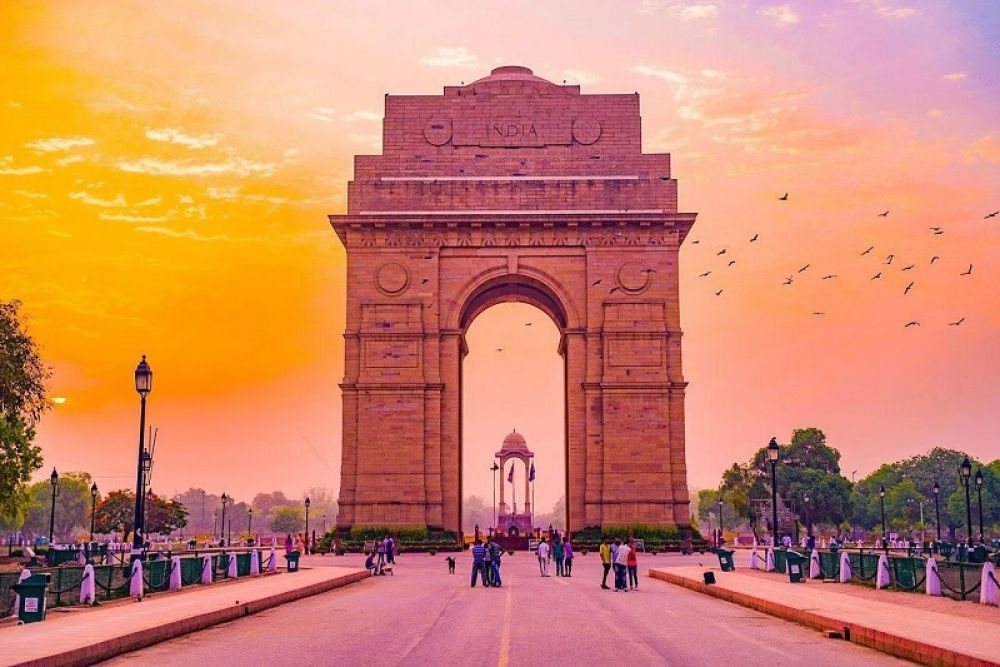The Golden Triangle India Tour is one of the most popular and enchanting travel circuits in India. This extraordinary journey takes travelers through three vibrant and historically rich cities: Delhi, Agra, and Jaipur. Each city offers a unique blend of history, culture, and breathtaking architecture, making the Golden Triangle a must-visit for anyone wanting to experience the essence of India. This comprehensive guide will delve into the marvels of each city, provide travel tips, and highlight must-see attractions.
Delhi: The Historical Heart of India
Delhi, the capital of India, is a city where the past and present coexist in harmony. The city is divided into two parts: Old Delhi and New Delhi, each offering distinct experiences.

Old Delhi: A Journey Back in Time
Old Delhi is a treasure trove of historical landmarks and bustling bazaars. The narrow lanes of Chandni Chowk are filled with the aroma of street food and the vibrant colors of traditional Indian markets. Key attractions in Old Delhi include:
- Red Fort: A UNESCO World Heritage site, the Red Fort is a symbol of India’s rich history and architectural brilliance. Built by Emperor Shah Jahan in the 17th century, this fort is a testament to Mughal grandeur.
- Jama Masjid: One of the largest mosques in India, Jama Masjid is an architectural marvel with its imposing structure and intricate designs.
- Raj Ghat: The memorial of Mahatma Gandhi, Raj Ghat is a serene place where visitors can pay their respects to the Father of the Nation.
New Delhi: A Blend of Modernity and Tradition
New Delhi showcases the modern face of India while preserving its historical roots. The wide avenues and impressive buildings reflect the colonial influence. Key attractions in New Delhi include:
- India Gate: A war memorial dedicated to Indian soldiers, India Gate is a popular tourist spot and a perfect place for evening strolls.
- Qutub Minar: Another UNESCO World Heritage site, the Qutub Minar is the tallest brick minaret in the world, surrounded by ancient ruins and lush gardens.
- Humayun’s Tomb: This magnificent tomb, a precursor to the Taj Mahal, is a stunning example of Mughal architecture and a UNESCO World Heritage site.

Agra: The City of the Taj Mahal
Agra, located on the banks of the Yamuna River, is synonymous with the iconic Taj Mahal. However, Agra offers much more than just this world-famous monument.
The Majestic Taj Mahal
The Taj Mahal, a UNESCO World Heritage site, is undoubtedly the highlight of Agra. Built by Emperor Shah Jahan in memory of his beloved wife Mumtaz Mahal, this white marble mausoleum is a symbol of eternal love. The intricate carvings, beautiful gardens, and reflecting pools make it a sight to behold, especially at sunrise and sunset.
Other Architectural Marvels in Agra
- Agra Fort: Another UNESCO World Heritage site, Agra Fort is a massive red sandstone fortress that served as the main residence of the Mughal emperors. The fort’s palaces, mosques, and audience halls are architectural masterpieces.
- Fatehpur Sikri: Located just outside Agra, Fatehpur Sikri is a UNESCO World Heritage site and a fascinating ghost city. Built by Emperor Akbar, it was abandoned due to water scarcity, but its palaces and courtyards remain well-preserved.
Local Delicacies and Handicrafts
Agra is also famous for its Petha (a sweet made from ash gourd) and Marble Inlay Work. Visitors can explore local markets such as Sadar Bazaar and Kinari Bazaar to buy souvenirs and taste local delicacies.
Jaipur: The Pink City
Jaipur, the capital of Rajasthan, is known as the Pink City due to its pink-colored buildings. The city is a vibrant blend of royal heritage and colorful culture.
Magnificent Palaces and Forts
- Amber Fort: Overlooking Maota Lake, Amber Fort is a stunning blend of Hindu and Mughal architecture. The fort’s Sheesh Mahal (Mirror Palace) is particularly famous for its intricate mirror work.
- City Palace: Located in the heart of Jaipur, City Palace is a splendid example of Rajasthani and Mughal architecture. The palace complex houses museums showcasing royal artifacts and costumes.
- Hawa Mahal: Also known as the Palace of Winds, Hawa Mahal is a five-story structure with a façade of 953 small windows. It was built for royal ladies to observe street festivals without being seen.
Cultural Experiences in Jaipur
- Jantar Mantar: A UNESCO World Heritage site, Jantar Mantar is an astronomical observatory built by Maharaja Jai Singh II. The observatory consists of various instruments for measuring time and celestial bodies.
- Traditional Rajasthani Cuisine: Jaipur offers a gastronomic delight with its traditional dishes like Dal Baati Churma, Laal Maas, and Ghewar. Dining at local eateries and heritage restaurants provides a taste of Rajasthani hospitality.
Shopping in Jaipur
Jaipur is a shopper’s paradise. The city is famous for its Gemstone Jewelry, Textiles, Handicrafts, and Blue Pottery. Popular shopping areas include Johari Bazaar, Bapu Bazaar, and Tripolia Bazaar.
Travel Tips for the Golden Triangle Tour
- Best Time to Visit: The ideal time to embark on the Golden Triangle Tour is during the cooler months from October to March.
- Travel Options: The three cities are well-connected by road, rail, and air. Traveling by train or hiring a car are popular options.
- Accommodation: A wide range of accommodation options are available, from luxury hotels to budget-friendly guesthouses.
- Local Customs: Respect local customs and traditions, especially when visiting religious sites. Dress modestly and be mindful of cultural sensitivities.
Conclusion
The Golden Triangle India Tour offers an unparalleled experience of India’s rich heritage, architectural splendor, and vibrant culture. From the bustling streets of Delhi to the timeless beauty of the Taj Mahal in Agra and the royal grandeur of Jaipur, this journey promises unforgettable memories. Whether you are a history enthusiast, a cultural explorer, or a photography aficionado, the Golden Triangle Tour has something to offer everyone.



